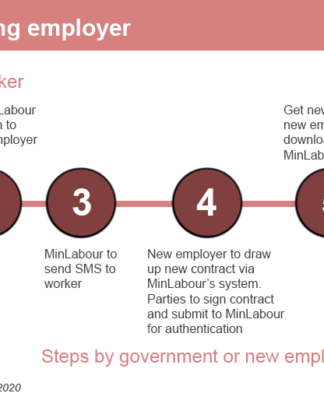1 FAANG Stock to Buy Hand Over Fist in April and 1 to Avoid Like the Plague
By Sean Williams – Apr 5, 2023 at 11:06PM
KEY POINTS
When volatility and uncertainty pick up, investors often turn to the FAANG stocks.
One FAANG component has a trio of operating segments poised to deliver significant growth in profits and cash flow.
Meanwhile, sales and profits for another top-tier FAANG stock are stuck in reverse.
Motley Fool Issues Rare “All In” Buy Alert
NASDAQ: AMZN
Amazon.com
Amazon.com Stock Quote
Market Cap
$1,036B
Today’s Change
(0.95%) $0.96
Current Price
$102.06
Price as of April 6, 2023, 10:00 a.m. ET
You’re reading a free article with opinions that may differ from The Motley Fool’s Premium Investing Services. Become a Motley Fool member today to get instant access to our top analyst recommendations, in-depth research, investing resources, and more. Learn More
Among Meta Platforms (formerly Facebook), Apple, Amazon, Netflix, and Alphabet (formerly Google), there’s one bargain-priced industry leader begging to be bought, as well as one outperformer that’s now far too pricey.
Things don’t always go as planned when investing in the stock market. Even though the major U.S. indexes tend to rise in value over long periods, stock market corrections, crashes, and bear markets are a normal part of the long-term investing cycle.
Over the past 15 months, volatility and uncertainty have picked up in a big way, with the Dow Jones Industrial Average, S&P 500, and Nasdaq Composite all falling into respective bear markets. But when the going gets tough on Wall Street, investors have a tendency to turn to long-term outperformers, such as the FAANG stocks.
Silver dice that say buy and sell being rolled across a digital screen displaying stock charts and volume data.
IMAGE SOURCE: GETTY IMAGES.
The FAANG stocks have run circles around Wall Street
By FAANG, I’m referring to:
Facebook, which is a subsidiary of Meta Platforms (META 2.19%)
Apple (AAPL 0.55%)
Amazon (AMZN 0.95%)
Netflix (NFLX -0.88%)
Google, which is a subsidiary of Alphabet (GOOGL 3.78%) (GOOG 3.76%)
Over the trailing decade (as of March 31, 2023), the benchmark S&P 500 has returned a respectable 162%. By comparison, Netflix, Apple, Meta Platforms, Amazon, and Alphabet (specifically the Class A shares, GOOGL) have respectively returned 1,180%, 942%, 729%, 675%, and 422% over the same time span. These stocks are running circles around Wall Street, which is why investors often flock to them when volatility picks up or a broader-market correction takes place.
Another reason these stocks are beloved by investors is because they’re industry leaders in one capacity or another. For example:
Meta Platforms owns four of the most-popular social media sites in the world (Facebook, WhatsApp, Instagram, and Facebook Messenger).
Apple’s iPhone accounts for around half of all U.S. smartphone market share since 5G-capable versions went on sale in late 2020.
Amazon’s online marketplace was responsible for an estimated 39.5% of U.S. online retail sales in 2022, according to a report by eMarketer.
Netflix is the global and domestic leader in streaming content market share.
Alphabet’s internet search engine Google accounted for more than 93% of worldwide search share in February 2023.
But in spite of their long-term outperformance, not all FAANG stocks are created equal. In April, one FAANG stock stands out for being historically cheap, while another looks particularly pricey and should be avoided like the plague.
Collapse
a drawing of a face
NASDAQ: AMZN
Amazon.com
Today’s Change
(0.95%) $0.96
Current Price
$102.06
YTD
1W
1M
3M
6M
1Y
5Y
PRICE
VS S&P
AMZN
KEY DATA POINTS
Market Cap
$1,036B
Day’s Range
$99.80 – $102.38
52wk Range
$81.43 – $160.08
Volume
43,808,020
Avg Vol
57,796,780
Gross Margin
43.81%
Dividend Yield
N/A
Should you invest $1,000 in Amazon.com right now?
The FAANG stock investors can buy hand over fist in April: Amazon
Among the five FAANG stocks, the one that stands out as the best value in April is e-commerce kingpin Amazon.
Like every single stock on the planet, Amazon has headwinds and risks it’s contending with, the most prominent being the growing risk the U.S. economy will fall into a recession at some point in the not-too-distant future. Since a majority of Amazon’s revenue is generated from retail sales, the inference is that the company could struggle if consumers pare back their discretionary spending.
However, there’s a pretty sizable flaw with using retail weakness as an excuse to avoid Amazon. Despite the online marketplace being Amazon’s primary revenue driver, it doesn’t play a particularly important role in cash-flow generation or operating income. Even if Amazon’s e-commerce division sees sales reverse, the company’s operating cash flow can sustain double-digit growth as long as a trio of ancillary operating segments continue to fire on all cylinders.
Although Amazon’s online marketplace isn’t paramount to profits, the Prime memberships the marketplace helps lure certainly are. Two years ago, Amazon announced that it had surpassed 200 million global Prime subscribers. As of the end of 2020, the company was generating $28 billion in annual run-rate sales from subscriptions.
Since then, the price of a Prime membership has increased, and Amazon gained the rights to Thursday Night Football. Subscription services is now a $37 billion segment on an annual run-rate basis. In other words, the company’s global Prime member count is likely well above 200 million.
Advertising services is the second key segment for Amazon. While it’s not in the same class as Alphabet or Meta when it comes to driving advertising revenue, Amazon is netting well over 2 billion visits on a monthly basis. That’s more than enough of a dangling carrot to put ad-pricing power in Amazon’s court. Despite the challenging growth environment in 2022, Amazon’s ad services segment delivered quarterly year-over-year sales growth ranging between 21% and 30%, sans currency movements.
The third ancillary division — and the one that’s arguably most important to Amazon’s cash flow — is Amazon Web Services (AWS). AWS has gobbled up 32% of global cloud infrastructure service market share, which is excellent news considering enterprise cloud spending is still in its early innings of growth. Best of all, AWS’s exceptionally high margins provide anywhere from 50% to 100% of Amazon’s annual operating income, even though AWS only accounts for about a sixth of the company’s net sales.
Based solely on the traditional price-to-earnings ratio, Amazon isn’t much of a looker. But it doesn’t make a lot of sense to use a traditional valuation metric to assess a company that reinvests the vast majority of its operating cash flow.
Throughout the 2010s, investors willingly paid between 23 and 37 times year-end cash flow to own shares of Amazon. Investors buying shares of Amazon in April are paying approximately 13 times Wall Street’s consensus cash flow for 2023 and just 7 forecast cash flow for 2026. On the basis of cash flow, Amazon stock is cheaper than it’s ever been.
A blue street sign that reads Risk Ahead.
IMAGE SOURCE: GETTY IMAGES.
The FAANG stock to avoid like the plague in April: Apple
However, there are two sides to every coin. While tech stock Apple is a phenomenal business, it’s this month’s FAANG stock to avoid for a variety of reasons.
Let’s state the obvious: Apple isn’t a train wreck. There’s a reason it’s Warren Buffett’s top holding at Berkshire Hathaway and the largest publicly traded company by market cap in the United States. In calendar year 2022, Apple generated more than $109 billion in operating cash flow.
Apple’s capital-return program is also the envy of pretty much every publicly traded company. It’s repurchased in excess of $550 billion worth of its common stock since the beginning of 2013 — that’s more than the market caps of all but seven S&P 500 companies, which includes Apple — and is parsing out nearly $14.6 billion in dividends annually.
In other words, if you’re holding on to Apple for five or more years to come, there’s a pretty good chance your initial investment will grow in value. But if you’re looking for a market-topping return or a deal, don’t expect to find it here.
Collapse
icon
NASDAQ: AAPL
Apple
Today’s Change
(0.55%) $0.90
Current Price
$164.66
YTD
1W
1M
3M
6M
1Y
5Y
PRICE
VS S&P
AAPL
KEY DATA POINTS
Market Cap
$2,591B
Day’s Range
$162.00 – $164.96
52wk Range
$124.17 – $176.15
Volume
45,390,123
Avg Vol
62,086,671
Gross Margin
43.06%
Dividend Yield
0.56%
The allure of Apple has long been its supercharged growth prospects for a mega-cap company. Unfortunately, that’s not what investors are getting right now. Mediocre sales following the launch of iPhone 14 coerced Apple to pull back on plans to expand production in September. Even though the company is strongly promoting fast-growing subscription services, physical products like the iPhone generate a majority of its sales.
What makes the iPhone 14’s so-so sales performance even more painful is that Apple has historically seen high inflation as a tailwind. Despite inflation pacing between 6% and 9% for much of the past year, Apple’s full-year revenue for fiscal 2023 is expected to decline by 1%, according to Wall Street.
To add fuel to the fire, Apple has relied on its mammoth share repurchase program to provide a boost to its earnings per share. Even with ongoing share buybacks, Apple’s earnings per share is expected to decline by 2% in fiscal 2023. In short, none of the tools that have fueled Apple’s outperformance in the past are on pace to help its top or bottom line grow in 2023.
During bear markets, it’s normal for investors to be more critical of company valuations. Following last week’s strong performance for the broader market, Apple is commanding a multiple of 25 times forward-year earnings despite its lack of growth in the current fiscal year. Compare this figure to the multiple of 10 to 15 times forward-year earnings Apple consistently traded at from 2013 through 2018, and you’ll see just how pricey Apple is in the current environment.
Suzanne Frey, an executive at Alphabet, is a member of The Motley Fool’s board of directors. John Mackey, former CEO of Whole Foods Market, an Amazon subsidiary, is a member of The Motley Fool’s board of directors. Randi Zuckerberg, a former director of market development and spokeswoman for Facebook and sister to Meta Platforms CEO Mark Zuckerberg, is a member of The Motley Fool’s board of directors. Sean Williams has positions in Alphabet, Amazon.com, and Meta Platforms. The Motley Fool has positions in and recommends Alphabet, Amazon.com, Apple, Berkshire Hathaway, Meta Platforms, and Netflix. The Motley Fool recommends the following options: long March 2023 $120 calls on Apple and short March 2023 $130 calls on Apple. The Motley Fool has a disclosure policy.





























